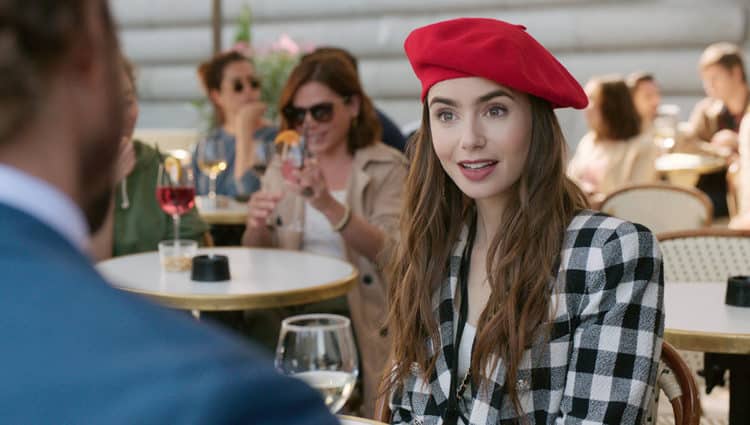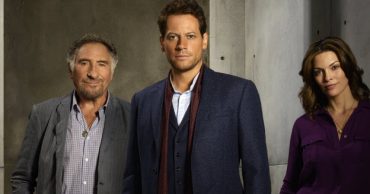
The city of Paris can trace its origins to approximately 259 BC when the Parisii, a Celtic tribe, settled on the banks of the Seine. As it evolved into the city we know today, many Americans have become quite smitten with its fashion, romance, art, and history. Gertrude Stein, American novelist, poet, playwright, and art collector, said that: “America is my country and Paris is my hometown.” She moved from the United States to Paris in 1903 and never moved back. Oscar Wilde, Irish author and playwright, said: “When good Americans die, they go to Paris.” Netflix’s Emily in Paris agrees with both Stein and Wilde and showcases the beauty, history, and romance of the city of Paris. Created by Darren Star and staring Lily Collins, this show tells the story of 20 something Emily Cooper, who gets the amazing opportunity to move to Paris to give an American marketing perspective to a French marketing firm. Along the way, she explores the French way of life and comes into her own. Here are ten romantic and historic locations seen in the series that are worth a visit.
Palais Garnier
The Palais Garnier, or Opera Garnier, was commissioned by Emperor Napoleon III as part of his plan to reconstruct Paris. Designed by architect Charles Garnier and completed in 1874 it is known today as a masterpiece of Neo-Baroque Architecture and one of the most beautiful places to visit in Paris. For Emily, it served as the backdrop to her break up with Thomas before a performance of Swan Lake and where she confronts uppity couture designer Pierre Cadault in one of the fancy boxes.
The Panthéon
Another break up scene for Emily takes place at the Pantheon. Emily is outside the Pantheon when she gets a call from her boyfriend in Chicago which ultimately ends in them breaking up. If a relationship has to end why not in front of a historical place in Paris? The Pantheon was originally a church but was secularized during the French Revolution. It was repurposed and dedicated to the memory of great French humans. It is the final resting place for Victor Hugo, Èmile Zola, and Marie Curie.
Jardin du Palais Royale
A happier occasion occurs at le Jardin du Palais Royale. Emily meets and befriends fellow American Mindy. This quaint park is the perfect spot to sit and people watch in while eating a picnic lunch. There are also shopping arcades framing the garden: Galerie de Valois in the east, Galerie de Montpensier in the west and Galerie Beaujolais in the north. The gardens are the grounds of the Palais Royal, which is closed to the public and today houses the Council of State. The Council of State, Conseil d’État, is “the French national government body that acts as legal adviser of the executive branch as well as the supreme court for administrative justice.” It is closed to the public. The Palais Royal was constructed in 1633 by Cardinal Richelieu and Louis XIV lived here in the 1640s.
Pont Alexandre III
Pont Alexandre III is consider by many to be the most beautiful bridge in all of Paris. It was built for the World Fair in Paris in 1900. Crossing the Seine River, the bridge connects the commercial avenue of Champs-Élysées with the museum area of Les Invalides. For Emily, it is the filming location of the controversial perfume commercial.
Canal Saint-Martin
As part of a double date Emily and Thomas go on with Camille and Gabriel, they take a romantic leisurely stroll along the Canal Saint-Martin. The Canal Saint-Martin is home to young, hip, and trendy bars, restaurants, and shops. Napoleon I ordered the construction of the canal in 1802. This canal would get its fresh water from the Ourcq river and would provide fresh water in Paris. This fresh water would help eliminate the spread of diseases such as cholera and dysentery.
L’Atelier des Lumières
Camille convinces Emily to go with her and Gabriel to the L’Atelier des Lumières. This is awkward for Emily considering she has feelings for Gabriel, her friend’s boyfriend. Well, at least the L’Atelier des Lumières, which opened is a 2018, is a beautiful immersive art exhibit that uses technology to bridge the gap between the art, the time period it was created in, and the person experiencing it. Emily can get lost in that instead of the awkwardness.
La Maison Rose
This restaurant is known for its pink and green architecture and is one of the most photographed buildings in Paris. The restaurant has been serving coffee for over 100 years. It got its signature look in 1920 and has been the host to several famous artists such as Piasco, Albert Camus, Suzanne Valadon, and Maurice Utrillo. It is located the Montmartre neighborhood right next to the Sacré-Coeur. Emily and Mindy have dinner here.
Café de Flore
Emily meets Thomas at Café de Flore. This historic cafe opened in the 1880s and over the years many artists used it as a home base as they worked on their creations. Jean-Paul Sartre said: “We got completely settled here: from 9 a.m. till noon we worked here, then we went for a lunch and at 2 p.m., we came back and talked with friends till 8 in the evening. After the dinner, we arranged meetings with friends here. It can seem strange, but we are at home at Café de Flore.”
Place de l’Estrapade
Emily and Gabriel’s apartments are located in the square Place de l’Estrapade. Gabriel’s restaurant known as Les Deux Comperes in the show and Terra Nera in real life can be found here as well. The bakery is called La Boulangerie Moderne in both the show and real life. The history behind this square is darker than it modern tranquil vibe. It was located outside of the Philippe-Auguste wall. The term estrapade means strappado in English. This horrific torture method was used on army deserters from the Middle Ages until fully banned by Louis XVI in 1776. It involved tying the victim to a rope and dropping them from a height significant enough to dislocate, fracture, or break limbs.
Le Grand Velour
The site of one of Emily’s mistakes, Le Grand Velour, is a Michelin-starred restaurant that Emily made reservations for on the wrong date. It’s okay Emily, everyone makes mistakes. This restaurant was opened in 1784 by Antoine Aubertot, as the Café de Chartres. Besides the wonderful food it is known for its its lavish decorations and furnishings and considered to be one of the most beautiful restaurants in the world.Victor Hugo
 Follow Us
Follow Us





